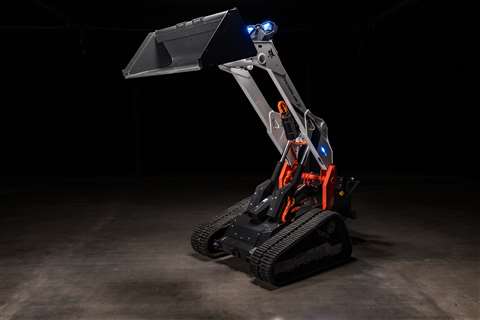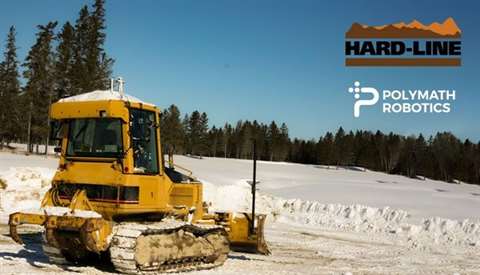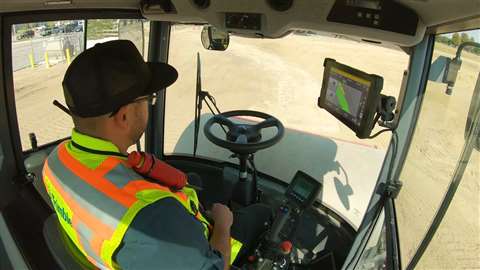Is there a limit to how autonomous construction equipment can get?
02 May 2023
 Bobcat’s Rogue X machine. (PHOTO: Bobcat)
Bobcat’s Rogue X machine. (PHOTO: Bobcat)
Automation of construction equipment is already well on its way.
In fact, if you consider the sort of technology that enhances machine control guidance as a form of autonomy, then it has been going on for years.
At ConExpo 2023 in Las Vegas, the construction industry saw where it might go next.
Several companies showcased prototype machines, including Bobcat with its Rogue X autonomous loader concept and Develon with its driverless Concept-X2 autonomous machines.
But is there a limit to how far autonomy can go in construction?
US-based industrial technology company Trimble grades autonomy on a five-level scale. Under the scale, level one is where operators perform most tasks, whereas level five is where a machine can operate with full autonomy.
Trimble president and chief executive Rob Painter currently sees construction at level one or two.
“I think it will continue to progress. We do think they [machines] can be more automated and more productive,” he says.
 Autonomous dozing solution launched by Polymath Robotics and HARD-LINE
Autonomous dozing solution launched by Polymath Robotics and HARD-LINE
Painter talks in terms of taking operations that perhaps in the past would have required two people and making them into a one-person operation. He cites the example of one human-operated machine leading a second automated one or having the second operated by remote control.
He also explains how Trimble is getting to grips with co-ordinating mixed fleets of machinery on job sites to smooth the way to greater automation.
“Contractors operate a rainbow colour of iron on job sites. We believe that the job site needs a brain. Those machines can’t just show up and automatically work. Someone has to be able to provide that brain; we’re working on being that intelligence layer.
“We need to be able to provide a set of co-ordinated work orders and then to provide the intelligence of how that work is going once the machine is moving in a more autonomous fashion.”
Nonetheless, Painter doesn’t see construction “jumping to level 5 autonomy overnight”. He explains, “Construction is generally a very bespoke operation.
“It’s not a mine, which is more of a closed-loop, controlled environment which lends itself to automation. We see autonomy [in construction] as a progressive process. And we don’t think that every site project is going to make sense to be done autonomously.”
Human oversight still required
That’s a view shared by Chris Sleight, managing director of Off-Highway Research. “When it comes to construction equipment, there is such a spectrum,” he says.
“There are examples of where autonomous equipment is already working in mining, where it is more of a closed loop. Gradually it is spreading down to smaller mines and quarries. The next area where it could potentially be applied to is new-build infrastructure projects where you already have the highest degree of machine control now, in machines like dozers, graders and pavers.”
But Sleight points out adopting high levels of machine control or automation is expensive and there has to be a payback. In an area like roadbuilding, it may look feasible because the project is already digitized and the setup cost would be relatively small.
“In order to do automation, you need there to be a fully digital mindset to the project. That happens with roads - that is an area where machine control has already been conceived and with skills shortages, good operators are hard to find. Automation is perhaps not the greatest step beyond that. Do you really need someone in the cab of every machine where the blade is moving itself and they are just driving backwards and forwards? You can see it working,” he says.
But he notes that the further down the scale, the less likely machine autonomy becomes. That’s particularly the case with repair and maintenance, which makes up a significant proportion of construction work in Europe. Sites can be confined, ground conditions and buried services unpredictable. That is likely to make automation much more difficult.
“Every site will be different and you won’t necessarily have a plan you can impose on your machines. It’s hard to see where the economic argument would come in for a small, complex, confined site,” Sleight adds.
Meanwhile Dr. Ruediger Kaub, CEO of foundation engineering equipment manufacturer Bauer Maschinen Group, also sees a bright future for automation in construction.
“My big vision is, at the end of the day, out machines have to work completely remote controlled, mostly automated,” he says.
The company is working on systems to enable this to happen, perhaps with a remote operator sitting in an office with three machines under their control. But Kaub doesn’t envisage removing people from the equation completely. “We still need to have the human being watching,” he adds.
And a report by global management consultancy McKinsey argued that, rather than automation putting construction professionals out of work, it can lead to enhanced productivity in a sector that suffers from low productivity and a lack of skilled workers.
It predicted, “Workers will need to learn to work side by side – or in a hybrid role – with machines,” rather than those machines taking over human functions entirely and becoming fully autonomous.
Customer caution
Meanwhile, caution among potential customers could also prove to be a limiting factor to further automation, or at least slow its adoption.
Construction around the world is bound by strict safety regulations and contractors and other businesses responsible for on-site safety will want to be sure that the technology works as intended before unleashing it on site.
 Trimble displayed new technology at the Las Vegas show (Photo: Trimble)
Trimble displayed new technology at the Las Vegas show (Photo: Trimble)
Even when they do, it’s likely to be with the assistance of close human oversight.
Discussing why the construction industry hasn’t seen more automation yet, despite the potential productivity, safety and efficiency benefits, Uwe Müller, program manager for commercial pilots at Volvo Construction equipment says, “I believe that the construction industry is ready for change but to what extent is the real question.
“Some of our customers would be happy to use autonomous machines today, but others want to wait until the technology is more mature.
“Customers want to be sure that any new machines are safe, reliable, durable and productive.”
But that cautious attitude does appear to be starting to change. A study by tech company Hexagon found that 84% of technology decision-makers at general contracting firms across North America, the UK, and Australia have adopted some form of autonomous technology in the last year to address key business challenges.
Another consideration is cost. Such innovative technology doesn’t come cheap and construction companies have traditionally been wary of making a significant capital outlay if they can’t be sure of reduced operational costs further down the line.
“Until now, it has been difficult to build a compelling case for automated construction equipment because the technology that sits behind it is expensive. However, as costs are starting to fall and the demand for increased efficiency, safety and productivity continues, automation is becoming an attractive and viable option.”
Volvo CE still has no plans for the industrialisation of an autonomous machine at this stage. And the Bobcat’s Rogue X and Develon’s Concept-X-2 autonomous machines also remain – for now – at the concept stage.
Nonetheless, it appears to be a question of ‘when’ rather than ‘if’ construction machines become more automated, albeit recognising the continued need for human oversight and only for certain types of project and site.
STAY CONNECTED



Receive the information you need when you need it through our world-leading magazines, newsletters and daily briefings.
CONNECT WITH THE TEAM








